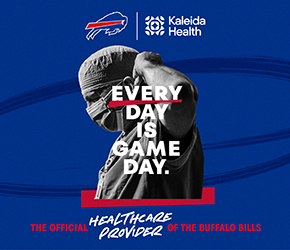Reuniting with Loved Ones in Senior Care Facilities Safely

Reuniting with Loved Ones in Senior Care Facilities Safely
By Annette Pinder
Western New Yorkers who miss their loved ones living in nursing homes and long-term care facilities can look forward to being able to see one another again. According to New State Department of Health (NYSDOH) Commissioner Dr. Howard Zucker, residents living in facilities where there has been an absence of COVID-19 cases for at least 28 days will be allowed to have visitors.
NYSDOH guidelines state that residents may have two visitors at a time — who will be required to undergo temperature checks, wear face coverings, and observe social distancing. One of the two visitors must be 18 years of age or older. For each facility, only 10 percent of the residents can be allowed visitors at any time. For example, in a 100-bed facility no more than 10 residents can have visitors daily. Nursing homes wanting to resume visitation were required to send their visitation plans to NYSDOH. On-site visitation for the state’s Long-Term Care Ombudsman program, which provides additional support to nursing home and long-term care facility residents, has also resumed. Ombudsman are required to use PPE, be screened as if they were a staff person, and have had a negative COVID test result within the past week.
Dr. Paul Shields, Medical Director of General Physician PC’s Post-Acute Care Program and Medical Director for Elderwood at Amherst and other area nursing homes, says, “Most visitations will be outdoors or with significant social distancing and universal mask use. However some sites are more well-suited to outdoor visitation than others, simply due to their design.”
“Residents desperately need to resume social interaction with their loved ones,” says Dr. Shields. However, he also knows that along with visitation, COVID incidence will likely increase. However, he says, “We believe that we will be able to manage and limit unnecessary exposure and spread by keeping residents as healthy as possible, so they have the best opportunity to fight the virus, and to survive and thrive if they get it.”
Meanwhile, Dr. Shields says, “While we are getting ahead of COVID locally, we need to move in a direction that continues without going backward. There is a significant percentage of the population that believes mask-wearing is not something that should be mandated. The simple fact is, social distancing and mask wearing is imperative. Research clearly shows the risks when these behaviors are ignored.”
Dr. Shields says the virus is not changing or getting worse, and that our behavior will determine what happens over the next several months.
“The rise of COVID in the younger population and the resumption of high-risk behaviors is creating a breeding ground for the virus to regroup and cause asymptomatic young people to spread the virus to their peers, co-workers, and families. As these behaviors continue, the elderly population will be put in harm’s way, resulting in continued prevalence and rising new incidence, and as the virus returns to the at-risk population, hospitalizations and mortality will again surge. That is the reality of this disease.”











